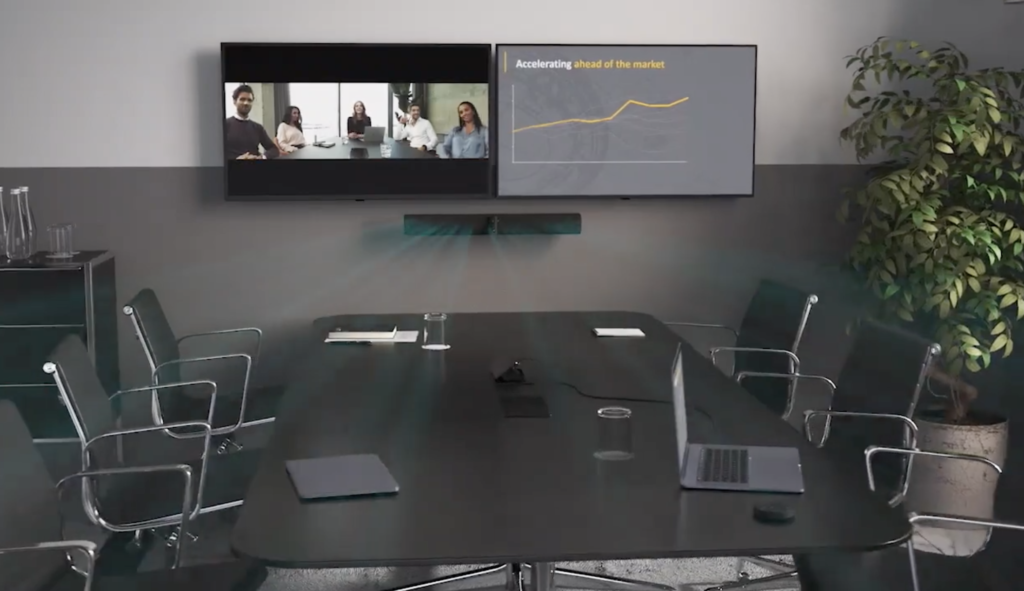Gitex has returned in 2021 after it scaled back the 2020 event in the wake of the pandemic. This year the event welcomes 3,500 exhibitors from 140 countries which is a staggering feat given much of the world is still grappling with COVID-19 infections.
The halls at the Dubai World Trade Centre were buzzing with excitement on day one as the Crown Prince of Dubai visited some of the key tech innovators from the region. The UAE has always taken a bold approach to its tech innovation and this year proved to be no different with showcases around autonomous taxis, robotics (including a robot dog), blockchain innovation and Artificial Intelligence.
Hybrid working is on everyone’s mind right now, for the innovators it is all about how to take hybrid working and move it to the next level. Whether that is embedding solutions into existing workflows or creating more immersive video conversations, a new battlefield of innovation is emerging.
Here are some of the big announcements from day one:
Avaya are doing two really interesting things with its Spaces collaboration product. Firstly, Avaya has developed a Smart Learning Platform which has given them the opportunity to target education establishments around the world. At a local level, Avaya can help rapidly train and upskill Emirati employees as the government looks to get 75,000 workers into the private sector over the next five years (referred to as the Emiratization).
Secondly, we are seeing Spaces integrated into customer’s platforms to create new immersive experiences. Avaya were showcasing a digital buying experience on the stand with Emaar Properties which showed how customers were able to initiate interactions with agents straight from the browser in a secure manner.
Nidal Abou-Ltaif, President, Avaya International commented, “Emaar Properties’ track record as a real estate pioneer is based on the memorable experiences that it provides to the owners and residents of its developments. And now, the company is delivering a digital buying experience that preserves the all-important human touch of a face-to-face transaction.”
Watch the interview with Nidal here.
Cisco launches Hybrid Work Index
Cisco has its hybrid working portfolio on show here in Dubai and is introducing its new Hybrid Work Index (HWI) which is essentially a study to gain insights into the working habits of people in this new hybrid environment. Business leaders can use the information to make better decisions about how they implement their hybrid working strategies.

The pandemic has driven new working behaviours and the HWI examines (updated quarterly) how certain habits have permanently reshaped our working lives.
Two key takeaways include:
- Not every participates in meetings in the same way: More than 61 million meetings take place globally every month via Cisco Webex. And in any one of them, only 48% of participants are likely to speak. In addition, 98% of meetings have at least 1 person joining remotely – increasing the need for inclusion and engagement of remote participants, so that they feel equal to their peers on site
- The role of AI is becoming clearer: Over 200% growth in usage of AI capabilities from July through September 2021 points toward people’s desire for improved meeting engagement. This includes meeting features like noise reduction, automatic translation and transcriptions, polling, and gesture recognition – making it easier for people to engage in conversation, whether they’re virtual or in-room
Device Vendors Go Big on AI
Jabra was is showing off its Panacast 50 video bar at the show this year. The audio specialist launched it back in the summer and tagged it ready for the ‘new normal’ workspace.
Jabra has partnered with Intel on this one to insure it delivers what is describes as ‘intelligent features’. These include intelligent zoom, active speaker detection and whole host of features to streamline the and optimise the conferencing experience.
Immersive features in conferencing solutions are fast becoming must haves. Jabra’s Virtual Director automatically adjusts the frame according to what’s happening in the meeting. It can detect active speakers and the flow of conversation which is engaging for participants.

Jabra is using AI technology to detect numbers of meeting participants through its 180 degree field of vision. This is being labelled as a ‘safety feature’ to help people count meeting participants so they can factor in health and safety protocols around meeting spaces due to COVID-19. This is a tenuous stretch for a ‘feature’ if ever I heard one!
Logitech had their AI-powered whiteboard camera on show this year. Named Scribe, the camera is designed for meeting rooms and/ or classrooms. The technology enables users to broadcast whiteboard content into video meetings to allow for more engaging conversations.
Loubna Imenchal, Head of video collaboration, Africa, Middle East, Turkey, and Central Asia, Logitech said, “Even as many people venture back to places of work and education, hybrid models are now an established mode of operations for many organizations, and Logitech sees continued high demand for solutions that aid collaboration.
Summary
Despite Hybrid Working taking a back seat to more central themes around connectivity, networks, blockchain and other cutting edge technology, there were some clear messages to be taken from day one at Gitex.
Hybrid Working is about much more than the technology. It is about how people use the technology, how it makes them feel and how engaged they are whilst using it.
The winners in the Hybrid Working space will be those companies that can wrap an experience around their technology, create highly relevant use cases, and keep customers and colleagues engaged. AI will certainly be key for companies building the hybrid working solutions of the future.
from UC Today https://ift.tt/3peZzFg




0 Comments